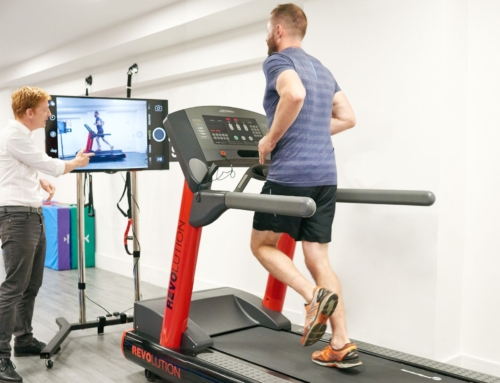Having explored the difference between physiotherapy and osteopathy in a previous post, we turn to answer another commonly asked question: what is the difference between physiotherapy and chiropractic?
We hope this blog will help you make an informed decision about your own conditions and which of the two professions might be best for you to see.

Origins & Philosophy of Physiotherapy Chiropractic
In the modern-day context, physiotherapists and chiropractors are healthcare professionals who address musculoskeletal conditions, among others. Musculoskeletal conditions refers to injuries or problems in the body relating to bone, joint or muscle.
Whilst both physiotherapists and chiropractors see these types of conditions, chiropractors will most commonly see conditions that relate to the spine (back or neck), such as sciatica, cervical or lumbar facet joint pain, and spondylolisthesis.
Although there are some similarities across the two professions, there are also some fundamental medical and philosophical differences that make physiotherapy and chiropractic distinct from each other.
Physiotherapy
The elder of the two professions, physiotherapy (soft tissue treatment, manipulation, and exercise) was first documented in 1813 by Per Henrik Ling, the “Father of Swedish Gymnastics”. Physiotherapy has since developed into a science-based profession that takes a “whole person” approach to health and well-being (The Chartered Society of Physiotherapy).
The holistic approach of physiotherapy means it can be applied across a wide range of settings from acute medicine in hospitals, to the community visits, sports teams and private clinics, such as Complete Physio.
Physiotherapists are commonly known for treating a range of conditions such as back pain, neck pain and sports injuries. However, physiotherapy is not limited to musculoskeletal and sports injuries, they also have a vital role in treating and managing neurological, respiratory, and cardiac conditions. There is almost no subspecialty both in acute, primary and secondary care where Physiotherapy does not play a big part in patient care.
Examples include stroke, Parkinson’s disease, multiple sclerosis as neurological conditions; chronic obstructive pulmonary disease and cystic fibrosis as respiratory diseases, recovery following heart attacks. As a result, physiotherapists can have a wide scope of practice.
At the core of physiotherapy is the value of a client’s involvement in their own care. This is carried out through education, awareness, empowerment, and participation of the client in their treatment (The Chartered Society of Physiotherapy).
Although physiotherapists use ’hands-on’ treatment techniques such as joint mobilisations and manipulations, and soft tissue massage, they also prescribe exercises and deliver more specialised treatments such as shockwave therapy and joint injections.
‘Active’ treatment and rehabilitation is a key component of physiotherapy. Physiotherapists would expect their patents to engage and commit to their treatment away from the clinic. Chiropractic, on the other hand, adopts more of a ‘passive’ treatment approach and patients are less likely to be prescribed exercises and encouraged to actively participate in the treatment process.
Chiropractic
Widely credited to Daniel David Palmer, chiropractic originated in the United States in 1895 and is considered as a complementary and alternative medicine. It is a treatment practice where manual techniques known as manipulations are applied to alleviate problems related to bones, muscles, or joints. Of these conditions, the majority of issues chiropractic addresses relate to spinal conditions such as neck and back pain.
Philosophically, chiropractic is founded on the concept that we exist in a “state of ease” that enables the body to express its innate spirituality physically. It was believed that misalignments in the skeletal frame (centred on the spine) inhibit this innate expression and therefore results in “disease”. Whilst there is evidence for chiropractic in musculoskeletal problems, there is little evidence of its effectiveness in more medically related conditions, such as asthma.
Training and Education
Physiotherapy and chiropractic are both studied at university. Both degrees cover core subjects such as anatomy, physiology, and pathophysiology, and require completion of supervised clinical practice modules in a clinic or hospital.
These placements provide students with essential learning opportunities and experience in the real-world environment. Here, students apply their theoretical knowledge and assess and treat clients with real issues under the supervision of qualified practitioners. Physiotherapy students primarily undertake their clinical placements in the NHS, whereas chiropractic students gain their experience in private clinics affiliated to the university.
In keeping with the scope of practice of physiotherapy and chiropractic respectively, degree students are exposed to a varying range of medical conditions.
Physiotherapy students, undertaking placements in the NHS will see clients across a wider range of settings, including hospitals, clinics, hospices and in the community. This therefore exposes physiotherapy students to a broad array of medical conditions.
Chiropractic students on the other hand will experience a greater concentration of musculoskeletal problems, with less exposure to other, more complex medical conditions.
As a result, physiotherapists are generally more highly trained to develop a broader foundation of knowledge and skills to deal with a wider range of health issues, prior to specialising in musculoskeletal conditions.
Assessment Process
Within the musculoskeletal setting, where physiotherapy and chiropractic are most comparable, the process of assessment will be somewhat similar.
During an initial consultation, both chiropractors and physiotherapists will perform detailed assessments that include clinical history and physical examination. As part of the physical assessment, range of motion, strength and specific tests may be performed.
For a thorough assessment, it may be necessary for you to remove some clothing to enable your practitioner to suitably observe and palpate the affected area. Upon the completion of the assessment, physiotherapists and chiropractors alike can identify the source of the issue and determine an appropriate treatment approach. In some cases, this may require referral for further investigations or to other healthcare providers such as an orthopaedic surgeon.
Treatment
The type of treatment that a physiotherapist and chiropractor may offer you will depend on the nature of the presenting problem. In addition, it will also depend on the skills and experience of your practitioner. However, the treatment offered is likely to be significantly different between physiotherapy and chiropractic.
Most physiotherapists will offer a combination of treatments including some “hands-on” (manual therapy) treatment, exercise prescription, rehabilitation, and education about your condition. The purpose of which is not only to help resolve the problem, but also to enable you in managing your recovery and prevent the pain from coming back.
The manual therapy techniques may be applied to muscles and joints to reduce pain and improve the movement of the affected area, whilst exercises are prescribed to reinforce the benefits of such treatment. Many physiotherapists, including our clinical specialists at Complete Physio, have a wider scope of practice and sometimes carry out diagnostic ultrasound and ultrasound guided injections.
In comparison, chiropractic treatment will mainly be focused on manual therapy techniques involving joint manipulations (when you hear a crack!), which in many cases may provide relief of symptoms. However, it is less common for chiropractors to prescribe exercises to accompany their treatment which may result in a more transient treatment benefit. This approach is also likely to result in a greater dependency on the practitioner to relieve symptoms, rather than the patient being more proactive and self-sufficient in their recovery.
Post-operative Rehabilitation
By nature of their training, physiotherapists have a wider scope of practice than chiropractors and are therefore better equipped to rehabilitate individuals post-operatively. Chiropractors receive very little training in the treatment and management of post-operative conditions such as knee and shoulder surgery.
Spinal Manipulation
Spinal manipulation is a specific type of manual therapy technique that both chiropractors and physiotherapists are trained to perform. A manipulation is performed when a therapist uses a high-velocity thrust technique and “cracks” your spine or a joint. Contrary to popular belief, the noise is not a joint being “put back in place”, rather it is the release of gas bubbles from the joint. Manipulation can be a useful technique, for example in the treatment of acute back pain and stiffness.
Chiropractors typically have greater foundation training in these techniques as undergraduates. However, most physiotherapists will seek this as part of their post-graduate education. Fundamentally, whoever you see for spinal manipulation, they must have adequate training and experience, and it is important to carry out your research beforehand.
At Complete we have clinicians who are trained to post graduate level in spinal manipulation. We also have clinicians who are dual trained physiotherapists and osteopaths.
Manipulation techniques can provide rapid pain relief if you have an acute, locked joint such as a neck or lower back joint. However, we believe the use of spinal manipulation is excessive in chiropractic and can certainly aggravate symptoms if carried out on the wrong patient.
Physiotherapists are exposed to patients who have had operations through their experience on the hospital wards, where they work alongside the surgeons. Physiotherapists will see post-operative patients from day one after their operation right up to their return to sport.
At Complete Physio, our physiotherapists work closely with orthopaedic surgeons and are familiar with managing many post-operative rehabilitation programmes. We aim to ensure that all our post-operative clients return to their desired level of function, whether that be walking or returning to competitive sport.
Specialisms
As physiotherapists and chiropractors develop their professional experience and interests, both professions allow for specialisation within certain areas of their respective practice. Chiropractic specialities include sport, radiology, paediatrics, and clinical nutrition, among others. Physiotherapy specialties include sport, orthopaedics, respiratory, neurology and paediatrics, among others.
We have physiotherapists at Complete Physio that are specialists in:
- Pilates for neck and low back pain
- Elite sports rehabilitation
- Post-operative rehabilitation
- Shockwave therapy for tendon pain
- Diagnostic ultrasound to diagnose specific ligament, tendon, or muscle injuries
- Ultrasound guided steroid injections to reduce pain
Conclusion
Physiotherapy and chiropractic have overlapping areas of practice that can be equally effective at treating certain musculoskeletal conditions and sports injuries. Whilst both professions have evolved since their inception, physiotherapy has developed more scientifically and become more integrated into the modern medicine model. Chiropractic on the other hand remains an alternative and complementary medicine that can be effective in addressing symptoms of certain musculoskeletal conditions.
Before seeing a practitioner, it is important to do your own research to see what type of therapy might be best suited to you and best equipped to deal with your specific issue.
For more information or to book a physiotherapy appointment, please call 020 3835 6053 or email info@complete-physio.co.uk.
Don’t let pain hold you back, book now!
Don’t let pain hold you back, book now!





